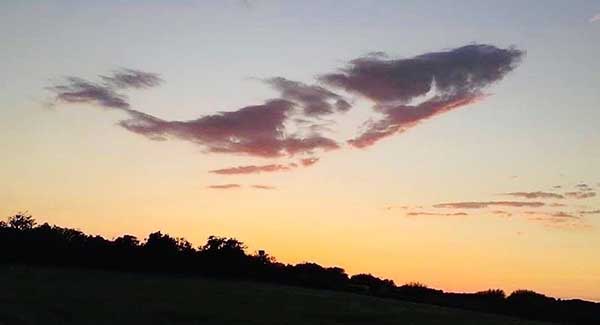Archaeologists have uncovered a rare stone figurine of a woman at a dig in Turkey’s central province of Konya.

The woman, with her sagging breasts and belly, is thought to represent either a fertility ‘mother goddess’ or an older woman who has achieved high status.
The 8,000-year-old figure is one of just a few statuettes from the time period that have ever been discovered intact, according to an expert.

By 2009, nearly 2,000 figurines had been unearthed at the site in Catalhoyuk, Turkey.
The sculptures typically show little animals, primitive sheep, and slender people thousands of years before Stonehenge or the pyramids were built.
However, Professor Ian Hodder of Stanford University told the Associated Press that this one is special since it was carved out of stone as opposed to the others, which were made of clay. Its excellent condition and craftsmanship also set it apart, he said.

The 7-inch (17-cm) figurine weighs in at 2.2 pounds (one kilogram).
Experts think they could be representatives of animals the people were dealing with. They may also have been teaching aides.
However, Professor Hodder noted that this figure was discovered beneath a platform accompanied with a chunk of black rock known as obsidian, unlike others discovered in waste pits, suggesting it may have been placed there as part of some reproductive ceremony.

In the 1960s, some researchers claimed the more rotund figures were of a mysterious large breasted and big bellied ‘mother goddess’, prompting a feminist tourism industry that thrives today.
Professor Hodder, however, cites more recent views that contend this item depicts older women with prestige.
‘The new figurine certainly suggests such an interpretation with its sagging breasts and belly,’ he said.
Catalhoyuk is one of the most important archaeological sites in the world.

Established around 7,000 BC, it was home to 5,000 people living in mud brick and plaster houses.
The people living there had to climb over the rooftops of their close-knit buildings and use ladders to enter their houses.
Early farmers who lived in the town retained a few tamed plants and kept wild animals for meat and milk. Their houses had horns from cattle embedded into the walls.

The town is home to the first murals, or painted pictures on plastered walls. In contrast to subsequent settlements, there is no visible hierarchy, no temples, no public areas, and no dwellings for priests or leaders. The dead were buried in spaces under homes, rather than in cemeteries.
Some researchers believe it was an equalitarian society.
The town survived for around 2,000 years. It is unknown what happened to its people, who may have been expelled due to the loss of local agriculture or slaughtered by invaders.


